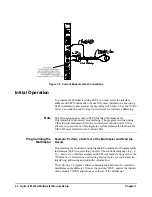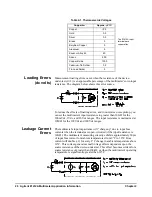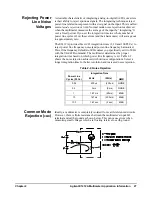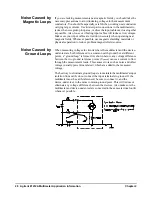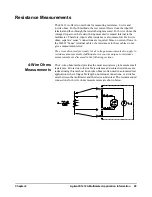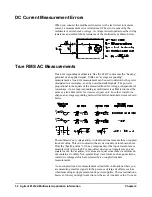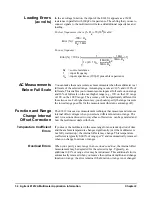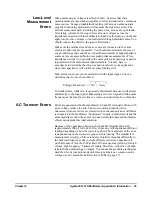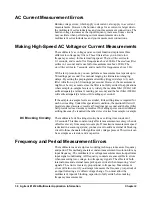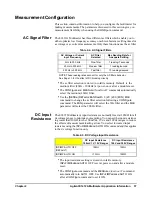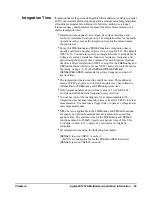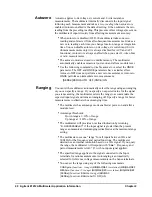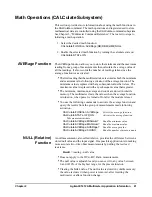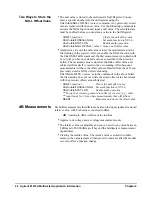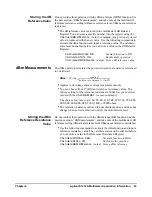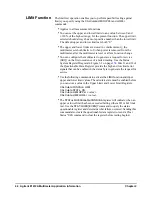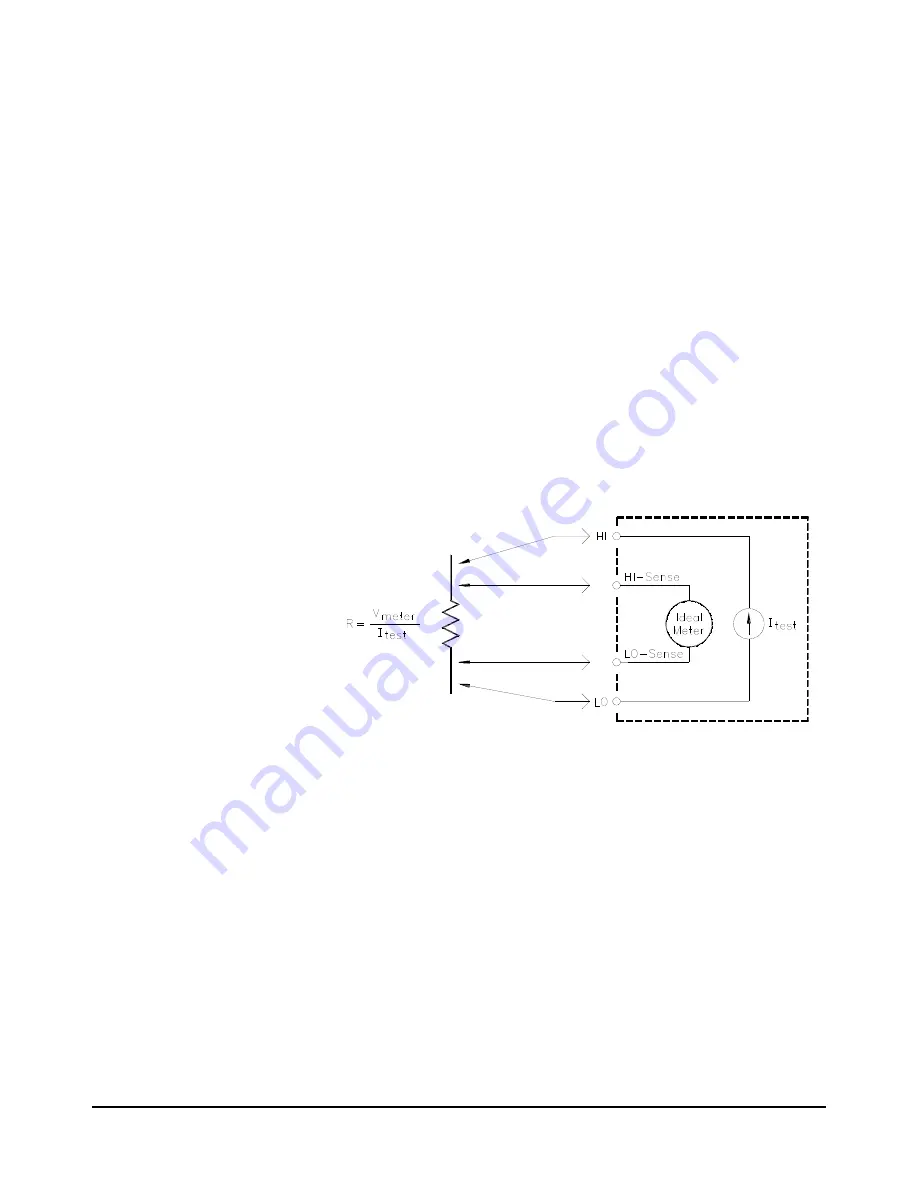
Agilent E1412A Multimeter Application Information
29
Resistance Measurements
The E1412A offers two methods for measuring resistance: 2-wire and
4-wire ohms. For both methods, the test current flows from the input HI
terminal and then through the resistor being measured. For 2-wire ohms, the
voltage drop across the resistor being measured is sensed internal to the
multimeter. Therefore, input cable resistance is also measured. For 4-wire
ohms, separate “sense” connections are required. Since no current flows in
the HI-LO “Sense” terminal cables, the resistances in these cables do not
give a measurement error.
The errors discussed previously for dc voltage measurements also apply to
resistance measurements. Additional error sources unique to resistance
measurements are discussed in the following sections.
4-Wire Ohms
Measurements
The 4-wire ohms method provides the most accurate way to measure small
resistances. Errors due to test cable resistances and contact resistances are
reduced using this method. Four-wire ohms is often used in automated test
applications where long cable lengths, numerous connections, or switches
exist between the multimeter and the device-under-test. The recommended
connections for 4-wire ohms measurements are shown below.
Summary of Contents for Agilent E1412A
Page 2: ......
Page 10: ...8 Contents Notes...
Page 14: ...12 Notes...
Page 15: ...13 Notes...
Page 16: ...14 Notes...
Page 26: ...24 Agilent E1412A Multimeter Module Setup Chapter 1 Notes...
Page 194: ...192 Agilent E1412A Multimeter Error Messages Appendix B Notes...
Page 201: ...Index 199 Index Agilent E1412A User s Manual and SCPI Programming Guide...








